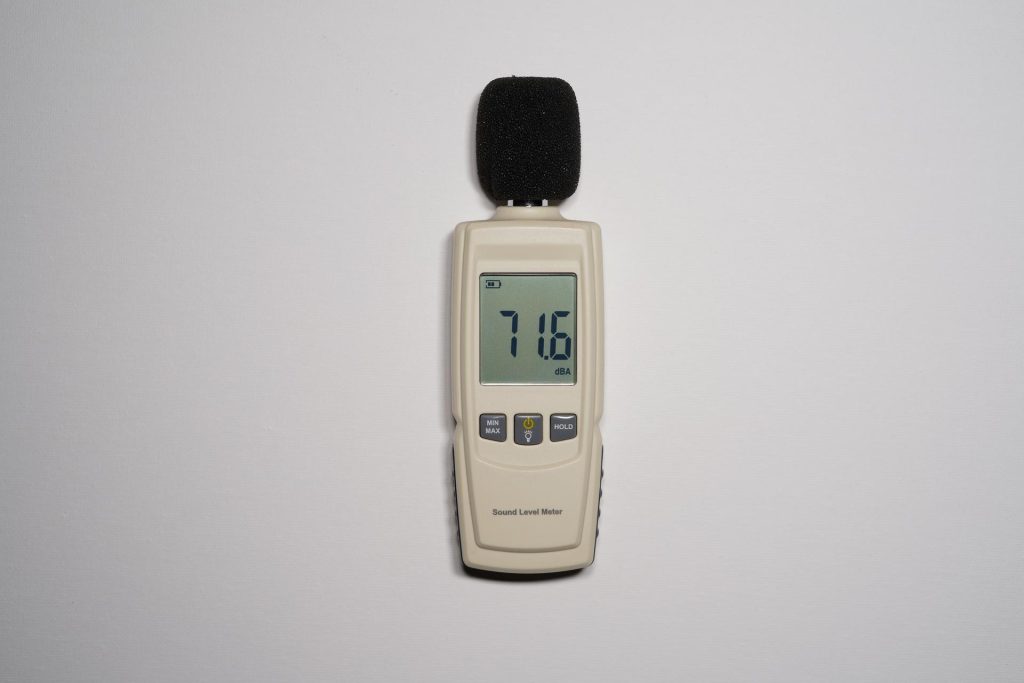Noise rating curves are an agreed set of curves relating octave-band sound pressure level to the centre frequency of the octave bands, each of which is characterised by a noise rating (NR).
Industry professionals often use the noise rating curve to measure how much noise is acceptable in a particular type of building.
What is a noise rating?
Noise ratings are a standard way to measure levels of noise in a building. Noise ratings are often used where new machinery or systems have been installed, such as a heater or air conditioning unit. The sound these make when they are turned on has the potential to disrupt those living or working in the building.
How can noise be disruptive?
Noise can be disruptive and have many undesirable effects. For example, suppose there is too much noise in a healthcare or education setting where people may be vulnerable. In that case, the ability to communicate may be threatened, leading to an unsafe environment.
A noisy environment can also reduce productivity and put workers at risk of ear damage. In fact, there are certain rules and regulations when it comes to noise levels in the workplace. The Control of Noise at Work Regulations 2005 aims to protect workers’ hearing by limiting their exposure to 87 decibels.
What are noise rating curves?
Noise Rating curves were developed to help define recommended indoor noise levels. Noise Ratings are now a standard measurement of noise in buildings. Noise Rating curves exist for different types of rooms, depending on their use and type of sound. These include concert halls, rock concerts, offices, and lecture halls. The goal is to reduce background noise that may interfere with the room’s or building’s primary purpose.
How do we use noise rating curves?
The sound must be measured and plotted onto a graph containing the noise curves to determine the value for a particular room. The noise rating of the room is found by looking at the curve that the highest point touches (or the highest noise rating curve to which the spectrum is tangent). A building’s recommended rating will vary based on its type, and you can compare yours to what is expected.
Why was the noise rating curve invented?
The International Organization for Standardization (ISO) developed noise rating curves to determine annoyance levels, speech communication levels, and hearing preservation levels in indoor environments. These curves range from NR 0 to NR 130.
There are maximum recommended Noise Rating (NR) Levels for different environments or types of buildings. On the lower end of the curve, concert halls, recording studios, and churches are recommended a Noise Rating of 25 (NR 25) and restaurants, offices, and shops are recommended NR 40.
On the higher end of the curve, spaces where heavy engineering works take place, are recommended a maximum of NR 70. These recommended noise levels should be taken seriously, and testing should be carried out if you are concerned about higher levels of noise in the building or space you or others occupy.
The following table shows the maximum NR levels for more room types.
| Maximum Noise Rating Level |
Application |
|---|---|
| NR 25 | Concert halls, broadcasting and recording studios, churches |
| NR 30 | Private dwellings, hospitals, theatres, cinemas, conference rooms |
| NR 35 | Libraries, museums, courtrooms, schools, hospitals operating theatres and wards, flats, hotels, executive offices |
| NR 40 | Halls, corridors, cloakrooms, restaurants, nightclubs, offices, shops |
| NR 45 | Department stores, supermarkets, canteens, general offices |
| NR 50 | Typing pools, offices with business machines |
| NR 60 | Light engineering works |
| NR 70 | Foundries, heavy engineering works |
Why is noise testing important?
Noise testing is essential to ensuring that we are not subjected to unsafe noise levels or disruption over time. A regular assessment of noise levels can confirm that a building is not emitting harmful amounts of noise.
At Air Tightness Solutions, we offer a range of noise testing (acoustic) services, including work and home testing. We can also conduct an environmental noise impact assessment if you are planning for commercial or industrial development.
This will determine the level of impact a proposed noise source will have on the existing surroundings. Depending on the result of this testing, we can then help you find solutions to the issue. Our expert consultants can help manage sound in your building and carry out work if necessary.
If you are looking to test the noise levels in your building and ensure it is compliant with the correct regulations, get in touch with a member of our friendly team.






